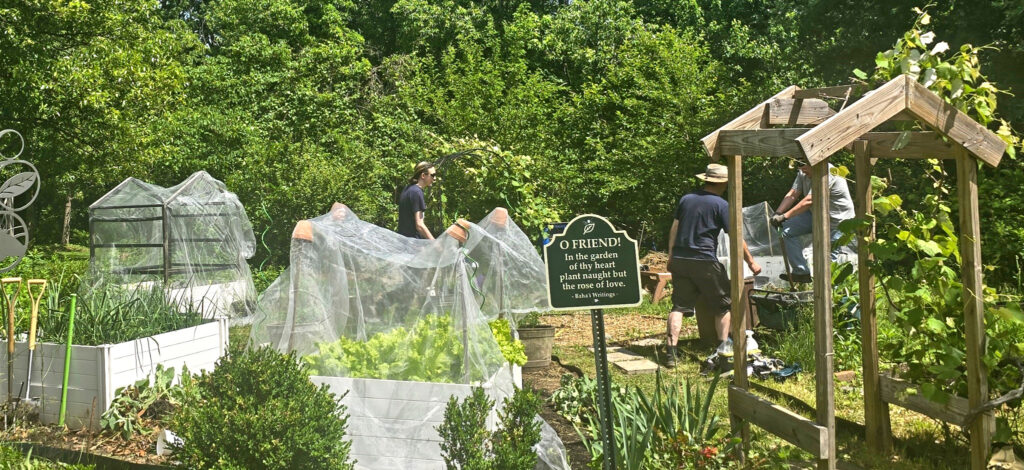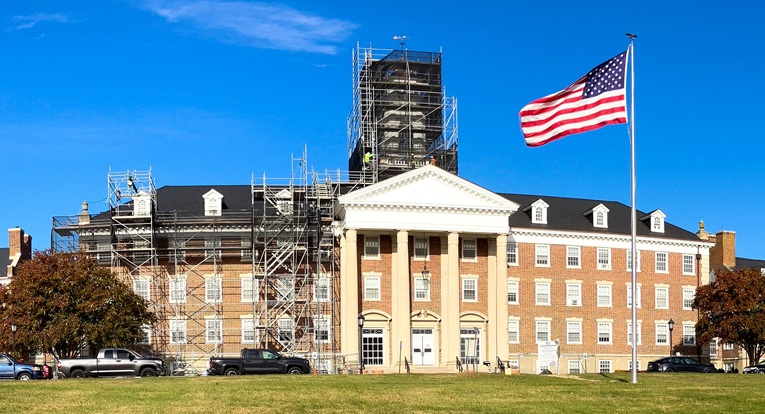Over 80 years after the establishment of Greenbelt’s community gardens, Councilmember Danielle McKinney launched Greenbelt Grows this April.
She said that the initiative, partnered with the Greenbelt Rotary Club and the Chesapeake Education, Arts and Research Society (CHEARS), is geared toward helping gardeners grow more and address issues like food insecurity by creating stronger community connections.
McKinney has tended a shared plot in Greenbelt’s Gardenway community garden for almost three years, after about a decade of gardening elsewhere, first on an apartment balcony and then in the town of Cheverly’s gardens while she was on Greenbelt’s waitlist.
“It’s definitely my happy place,” she said. But as a member of the Greenbelt City Council, she’s made it a goal of hers to get more people gardening.
She hopes that residents can use Greenbelt Grows as a network to get information about gardening and also to share produce with those who may need it.
Shaymar Higgs, founder and executive director of The SPACE: Free Art for All, said that’s exactly what he’d like to see in Greenbelt.
“I always have plants that I’m trying to give away, cuttings that I’m trying to give away. There isn’t really a channel for that, or even for tool sharing,” Higgs said. “It would be nice to have those kinds of channels.”
He also has a plot on Gardenway where he grows plants native to Maryland and plants that are part of local African American history, and he’s started his own initiative to encourage gardening in Greenbelt.
Gardens as Therapy
His initiative, called Real Men Grow, focuses on improving men’s mental health by getting men in the garden and comfortable in nature.
“Gardening is so therapeutic and takes you out of the crazy, artificial world and brings you back to the natural environment which we’re all from,” he said.
An Invasive Native
But Higgs also wants to use his platform as a gardener and community activist to educate people on the harm caused by, in particular, the red trumpet vine, which he often sees other gardeners growing.
The plant is popular for its large, trumpet-shaped red flowers, because they attract hummingbirds and because they’re easy to grow. But the plant, though native to this area, is also invasive, grows aggressively and has strong roots that make it hard to remove.
“That stuff destroys your garden,” Higgs said, likening the plant to zombies because cuttings can grow on their own.
He said that he thinks that the plant should be outright banned, but hopes to introduce people to alternatives such as the cardinal climber, another form of vine with a red flower that attracts hummingbirds but isn’t so detrimental.
Tree Encroachment
Another challenge facing Greenbelt’s community gardens is the gradual encroachment of trees, foliage and development on the garden space perimeters, slowly shrinking the size of the gardens, according to Ellen Bastio, president of the Greenbelt Community Garden Club for the last two years.
The club, formed in 1938, administers three locations including the Gardenway space where McKinney and Higgs garden and where Bastio served as coordinator for three years prior to her term as club president.
Bastio said that the waiting list for community garden plots has consistently numbered at around 20 people over the last few years, so reclaiming former garden space is a pressing issue.
City Support
This year, Greenbelt’s Public Works Department felled several trees and replaced them with native shrubs, restoring some sunlight to the plots where shade had made growing difficult.
The department also mows the grass on the garden perimeters, and provides supplies like wood chips and mulch collected from other maintenance activities.
But conflicts, such as the health of Greenbelt’s forest preserve and whether or not the city has funds to spare, complicate the matter.
“As a community, that’s our biggest challenge right now,” said Bastio.
McKinney hopes that through Greenbelt Grows, residents can be empowered to make an impact on issues like preserving the community gardens as well as combatting food insecurity and promoting healthy eating and recreation.
She, Bastio and Higgs, all of whom have Greenbelt community garden plots, are out gardening almost every morning. “It’s a mental health break from the world,” said Bastio.
Being responsible for their own plots means they can all realize their own vision. Higgs went so far as to build a pond in his plot to increase biodiversity, which helped adapt to the area’s swampish environment.
“Everyone has a water problem back here,” said Higgs. “I’m like, why don’t you just work with nature?”
Volunteer Opportunities
For those who want to garden but might not be prepared for so much commitment, there are volunteer opportunities in the three Three Sisters Gardens (located at Schrom Hills Park, the Community Center and Springhill Lake Recreation Center), which are managed by CHEARS, a partner of Greenbelt Grows. There is no waitlist and there are no fees, unlike for the community gardens, where the club has to charge gardeners between $15 and $37.50 per year depending on the square footage of their plot in order to keep things running.
The Three Sisters Gardens are where Greenbelt Grows holds their workshops. They held one on Saturday, July 26 at the Schrom Hills Park location focusing on container and transitioning gardening for planting in the fall, and there are more to come.
Will Hammann is a University of Maryland student at the Philip Merrill College of Journalism interning with the Greenbelt News Review.




